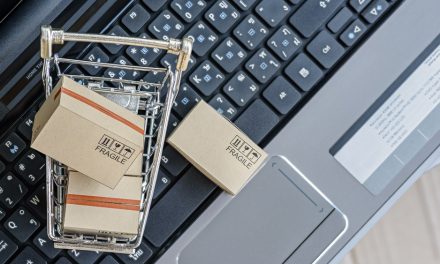
Driving digital: a practical roadmap for the future of logistics

Gary O’Connor, Chief Technology Officer at Doddle, discusses how digital transformation seems to be slowing down since the pandemic hit and explains how posts and carriers can embrace valuable digital innovations and data collection in a way that makes them more operationally effective.
Most logistics news since COVID-19 broke has been about increasing capacity, hiring more drivers, building new sheds, et cetera. All of these are obviously fundamentally important, but the one thing there hasn’t been much coverage on is the importance of digital transformation. It almost seems to be slowing down in this pressurised environment.
It is more apparent than ever before to postal organisations that parcels are going to be the lifeblood of their businesses. Of course, letters will provide an ongoing revenue stream for the next 10 or maybe even 20 years, but the structural decline in letter volumes globally since the start of the 21st century will only continue as communication continues to shift to new media.
Indeed as Royal Mail Executive Chairman Keith Williams said this June: “At the heart of this plan is our intention to move from being a UK-focused letters business that also delivers parcels to an international parcels business that delivers letters in the UK.”
As this transition occurs, postal operators and carriers are faced with a seemingly endless rising tide of parcel volumes. That should be a good thing, but parcels are relatively expensive to carry, and require significant capital expenditure in infrastructure to process effectively. And, as many postal operators and parcel carriers are finding as a result of the sudden spike in parcel volumes caused by COVID-19, a rising tide can overwhelm the unprepared.
Much like the way in which ‘sustainability’ often appears to move up and down the list of priorities, ‘digital transformation’ often takes a back seat in times of heightened operational challenge.
Digital transformation is absolutely critical to the ongoing existence of a parcel business because the reality is that many postal carriers and parcel carriers are so far behind the curve in terms of customer experience.
The experience of having a parcel delivered has hardly changed in the last decade, at least in the vast majority of cases. By comparison, in that time, consumers have become used to having useful information at their fingertips and total control (or the appearance of total control, at least) over their consumption. When I hop in an Uber I know what the driver had for breakfast and I can turn on the heating in my house remotely so it’s nice and warm when I walk in the door, but when it comes to logistics my parcel still commonly disappears into a mysterious vacuum from the minute I buy it to the minute it magically appears on my doorstep.
As an industry, logistics is falling further and further behind because a carrier isn’t just compared to its direct competition – consumers will be thinking about their delivery experience in comparison with the rest of their daily lives. That means your ‘competition’ in terms of customer experience is Uber, Apple, Deliveroo, TikTok or Facebook.
This is a particularly acute problem in postal operators. Whereas some carriers have begun to invest in improved digital experiences around delivery, postal operators by and large have not, certainly not to the extent that leaders such as Amazon and DPD have. The visibility of a delivery is crucial to customers.
It’s the difference between hours spent waiting for a knock on the door, versus being able to see exactly where the delivery van is on a map.
With the advent of granular location-based tracking such as most food delivery apps now offer, consumers expect a similar standard from their parcel deliveries.
While many posts have invested in apps and large-scale digital teams, they are often challenged by their inflexibility. To stay focused on the parcel tracking example, most apps do no better in this regard than the website or an email notification. For many businesses, their delivery tracking hasn’t really changed in the last decade. It might have moved from an email update to a web portal to an app – but the information presented and the value offered is more or less exactly the same.
It’s understandable on one level. For logistics businesses dealing with huge delivery volumes, changing their ways of working in the delivery process is a huge risk. If a new system causes disruption or is unreliable, the impact is sizable and immediate. The fear of disruption causes reluctance to adopt new tech and processes, and can also lead to an insular “we’ll build it ourselves” approach. On top of incessant pressure on achieving or maintaining profitability, postal operators especially have trouble accessing the capital required for digital investments.
So how can posts and carriers overcome these fear factors and embrace valuable digital innovations in a way that makes them more operationally effective?
It’s the effectiveness part that is most important. Before more advanced services or new revenue streams become commonplace, boards and executive leaders in the industry need to see value in the short term.
Accenture’s Brody Buhler has talked about a model for digital transformation in postal and parcel companies. His theory is that the start must focus on cost, and show how digital can act as a cost driver. Once you’ve got a digital foot in the door, you start to expand to digital delivery and customer experiences.
To use a PUDO example, at Doddle we’re working with a major carrier that currently uses waybills and printed receipts in parcel shops as a way of documenting transactions. By providing a digital touchpoint to replace those manual processes, there will be immediate cost savings thanks to fewer WISMOs and other customer contacts, and no cost of consumables. Once you have that digital touchpoint, you can start to build on the value.
First, you can start to measure the performance of the location – what’s digital is visible, so you can track performance and figure out where issues lie.
Then you can add functionality like digital signatures. On top of that, consumers get a better experience with features like targeted offers and digital communications.
So far so good – we know that this stuff is possible and valuable because there are already businesses living it. It’s what this leads to in the longer term that I think is most significant of all.
In the future, logistics companies will need to become intelligence and data houses as well as parcel-movers. In tech-company talk, the whole premise of logistics today is to act as a “dumb pipe”. That reductive term obviously fails to encompass the inherent challenges of carrying parcels, and does no justice to the incredible effectiveness with which the task is performed – but what it means is that carriers do the job of moving the parcel and do not concern themselves with what is in the box or the metadata of the journey.
The future will be about knowing what’s in every parcel you ever deliver. It’s the data on who wants what, where they buy it from, how they want it delivered, how often they want this specific product, how often they buy in general, how much they paid for it, whether they returned it, where they live, and so on.
If the second step on our roadmap involves providing digital experiences across consumer touchpoints, this final step of the vision is about carriers providing retailers a massively valuable intelligence tool powered by fully digitised delivery.
I called out Amazon earlier because they’re already thinking this way and have been for years. They’re becoming more and more vertically integrated, running their own web services, retailing their own products on those web servers, then picking and packing and delivering their own orders. Each stage produces data which can inform every other step of the journey.
Why does Prime exist? Because the data show that giving customers faster delivery creates loyalty.
Why do Prime products come up more often and at higher ranks in the search engine? Because the data from the last mile is being used at the retailing level, highlighting what customers want.
Why invest in Amazon Hub? Because customers love picking stuff up away from their homes, and shop more often when they use this feature.
No business on earth understands the parcel market or the retail market quite like Amazon, because they have the biggest supply of data at every point of the consumer journey. But the principle is far from exclusive to Amazon. Carriers and posts still own so much volume and consequently could access much more data than Amazon does.
The challenge is to access the data. Today, retailers are less likely to be willing to part with all of this information. That’s why carriers must prove their value with better customer experiences – worth it for its own sake, but also effectively as an intermediary step towards fuller data-sharing with retailer customers.
Highlighting customer experience benefits and selling useful features is essential to obtaining data and selling to retailers. Once parcel carriers are capturing all of this valuable data, they can build products around it. Retailers would love to follow Amazon’s model and use last-mile learnings to power their retail performance, and expand their dataset beyond their own customer base thanks to the carrier’s wider audience.
This is where posts and carriers should be in the long term. There will always be value in delivering physical goods, but as postal organisations transition away from letters and as carrier businesses find it harder to deal with increasing e-commerce volumes without huge capital expenditure, they’ll need to find other revenue streams to stay profitable and sustainable. The intelligence they’re capable of providing to power smarter retail is practically limitless, and the retail market will always be looking for ways to make more effective decisions.
About the author
 Gary joined Doddle in 2014 and is responsible for Doddle’s technology and product teams, leading the creation of our technology platform and working with carriers and posts to provide digital solutions. Prior to joining Doddle, Gary held technical leadership roles at the BBC, Betfair and IBM.
Gary joined Doddle in 2014 and is responsible for Doddle’s technology and product teams, leading the creation of our technology platform and working with carriers and posts to provide digital solutions. Prior to joining Doddle, Gary held technical leadership roles at the BBC, Betfair and IBM.










